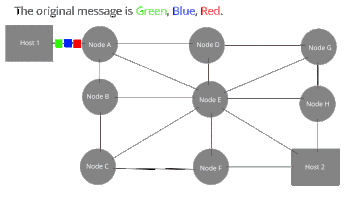Concept
A simple definition of packet switching is:
Packet switching features delivery of variable bit rate data streams, realized as sequences of packets, over acomputer network which allocates transmission resources as needed using statistical multiplexing or dynamic bandwidth allocation techniques. When traversing network nodes, such as switches and routers, packets are buffered and queued, resulting in variable latency and throughput depending on the link capacity and the traffic load on the network.
Packet switching contrasts with another principal networking paradigm, circuit switching, a method which pre-allocates dedicated network bandwidth specifically for each communication session, each having a constant bit rate and latency between nodes. In cases of billable services, such as cellular communication services, circuit switching is characterized by a fee per unit of connection time, even when no data is transferred, while packet switching may be characterized by a fee per unit of information transmitted, such as characters, packets, or messages.
Packet mode communication may be implemented with or without intermediate forwarding nodes (packet switches or routers). Packets are normally forwarded by intermediate network nodes asynchronously using first-in, first-out buffering, but may be forwarded according to some scheduling discipline for fair queuing, traffic shaping, or for differentiated or guaranteed quality of service, such as weighted fair queuing or leaky bucket. In case of a shared physical medium (such as radio or 10BASE5), the packets may be delivered according to a multiple access scheme.


No comments:
Post a Comment